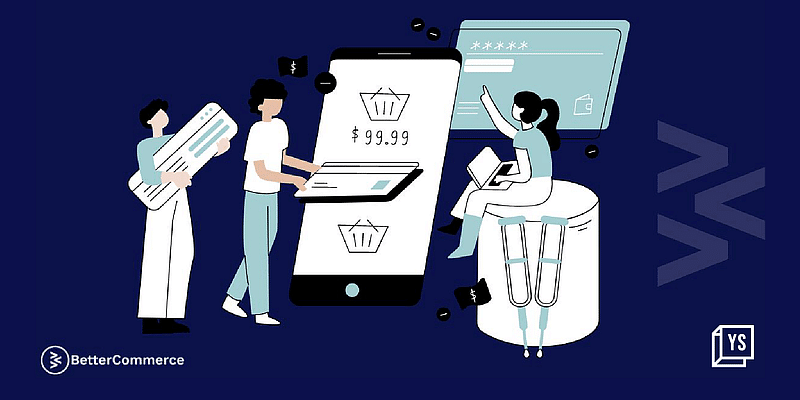For many ecommerce businesses, the prospect of building in-house ecommerce technology teams can be very alluring. The technology that you own is an asset, and the value of this asset can help increase your valuation. But the argument for owning proprietary technology is not just limited to valuations. Having a dedicated team for an ecommerce business depends on many factors like the scale of your business, capital investment, expansion plans and a lot more. Having an in-house team is a huge financial and operational decision, which affects the growth of a business significantly.
Brands need to analyse two critical aspects that will help them take a sound decision:
Criticality of the problem:
Businesses need to decide the criticality of the problem and rule out the possibility that it can be delivered or solved by a third-party vendor. Only then it should be solved internally. If the technology vendors are not able to solve a specific problem, the most logical answer is that it is too difficult to solve and not the fact that they can’t solve it. During such times, having an internal team may not be the best solution.
Revenue:
Deciding on the revenue turnover will help you invest in the problem. An internal team is a necessity for large brands that generates Rs 1000 crore plus revenue. Until then, a Head of Technology and a few associates with the support of a few partners and vendors can solve 99 percent of the problems.
Let’s dig deeper to understand what an ecommerce company needs to consider before even deciding to move along this path.
01.Focus of the founder
Building a technology team requires a focussed approach and extensive knowledge of technology. Many can debate that the founders can hire a CTO to do the same. However, a technically-sound founder can manage to build a competent in-house team. If the founder keeps up with the ever-changing landscape of tech, it makes it easier for you to determine the technologies, methods, and platforms that would best suit your needs, and use them professionally to develop your product.
02.Changing technology trends
Another factor to consider before any ecommerce company decides to build its team (which is also the most ignored factor) is the changing technological trends. No matter which technology you choose to build your stack, it will become irrelevant within a few years. Advances in AI, machine learning, robotics, and other technologies have leapfrogged the pace of change. To keep up with the changing technologies pushing innovation, businesses need to be ready to incorporate the most promising options. Therefore, devising a plan to adopt to such changes requires significant efforts from the technical team.
03.Complex technology
The level of complexity of technology for ecommerce is huge. Over the last few years, multi-touchpoint ecommerce has become the minimum expectation from the consumer and customer experience, of course, is a major sales driver. The end-to-end ecommerce stack consists of at least 10 moving pieces that are connected to each other and need to work seamlessly for any growing retail business. Choosing the piece that you want to own requires a significant understanding of the secondary and tertiary dependencies and technologies.
04.Competitive advantage
Every ecommerce business needs to find answers to some basic questions before even signing up on this journey. These include “Does owning the technology give them any competitive advantage?”, “Is there any problem that the market is not solving for them”, “How critical is the problem to the core business?”, “At what stage/revenue does owning up the team make sense?”. Because, many times, a retail brand ends up owning the technology team for the sake of an investment plan or as an ambition rather than a problem that needs to be addressed.
05.Cost of resources
The current job market is unpredictable. Getting the right talent and retaining them is a global problem, especially when it comes to technology. The salary brackets have doubled over the last few years. With the increase in competition, acquiring customers has become difficult and a costly affair. The margins are becoming bleak. Owning a technology team in a 3–5-year span will make the margins even bleaker.
06.Optimisation and security
A final piece of the entire technology puzzle is that it doesn’t cost much to build a stack, but it does cost a fortune to maintain it. Once you decide to build your own ecommerce stack, optimisation and security threats are your problem. And it requires an entire army to handle it. Making it work with a third-party platform is again your challenge – be it CRM, ERP, or an automation platform.
At the end of the day, brands need to focus on three important elements – profitability, sustainability, and longevity of the business. While it is difficult to say when to move to in-house development or custom development, one thing is for sure – it requires deeper thought than ambitious discussions in the boardroom.
Know more about how BetterCommerce has helped brands deliver a seamless experience to their customers and achieve scale,



![Read more about the article [The Turning Point] How absence of capital and a timely pivot led Bhanu Chopra to start the first SaaS company to head for an IPO in India](https://blog.digitalsevaa.com/wp-content/uploads/2021/12/CopyofImageTagsEditorialTeamMaster18-1639131941132-300x150.png)






